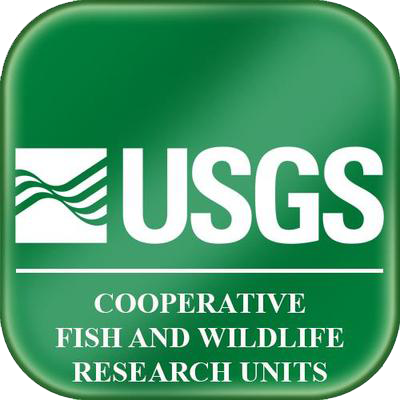SGCN
State Wildlife Action Plans are proactive plans that assess the health of each state’s wildlife and habitats, identify key threats, and outline the actions needed to conserve fish and wildlife over the long term. Note:
State Wildlife Action Plans identify Species of Greatest Conservation Need (SGCN) in their State, and identify information needs and management actions necessary to keep these species common.

The Washington Unit is identifying and diagnosing key factors that influence marine survival of Puget Sound salmon and steelhead, developing improved run forecasting predictions, and informing effective habitat and population restoration programs.

The Nebraska Unit is studying various aspects of reintroducted river otters in the State, including habitat use, movements, genetics, and impacts of non-native vegetation.

The West Virginia Unit, in collaboration with the Cerulean Warbler Technical Group, National Council for Air and Stream Improvement, National Fish and Wildlife Foundation, Appalachian Mountains Joint Venture, and researchers and managers from universities, State agencies, U.S. Forest Service, USFWS, and private landowners in West Virginia, Ohio, Kentucky, and Tennessee, completed a 6-year study last year with the objective of identifying forest management approaches that are compatible with cerulean warbler conservation.

The North Carolina Unit has been studying the effects of a variety of human activities on nesting American oystercatchers at Cape Lookout and Cape Hatteras National Seashores on the Outer Banks of North Carolina since 1997. Using low cost, low power, digital audio and video recording devices, the researchers have been quantifying animal behavior in ways that were not previously possible.

The New York Unit has developed a decision tool to help the State identify SGCN.

The Pennsylvania Unit is developing river otter spatial capture-recapture models in the open source modeling platform R to see how population estimates might change with better defined models.

The Virginia Unit is using acoustic detectors to study bat habitat associations and distributions.



